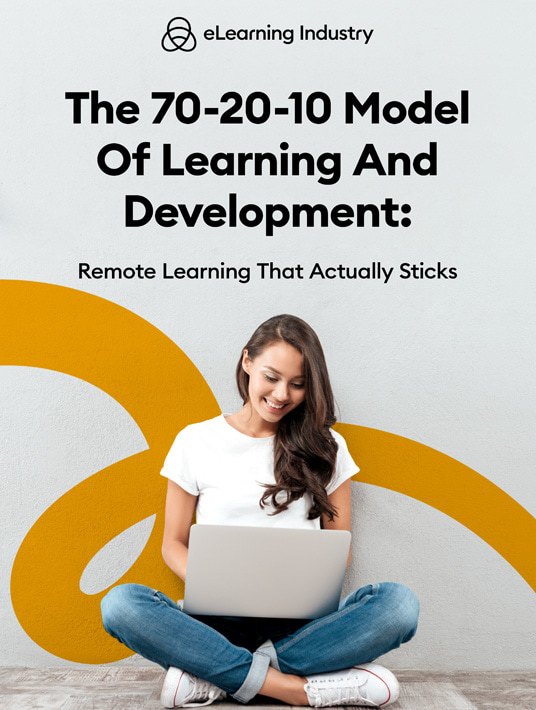Designing Remote Learning That Actually Sticks With 70-20-10
Remote work has changed the way we hone our skills, bridge knowledge gaps, and improve on-the-job performance. So, how can you provide your remote workforce with the training they need by implementing relevant and relatable eLearning programs? That’s where the 70-20-10 model of L&D comes into play. This guide explores how this approach can help you keep your geographically dispersed teams in the know.

eBook Release
The 70-20-10 Model Of Learning And Development: Remote Learning That Actually Sticks
Dive into practical ways to build skills, grow, and stay engaged, even when working from afar.
The Perks Of The 70-20-10 Model In L&D
From virtual mentorships and peer online learning to taking on more tasks to build real-world experience, the 70-20-10 model gives organizations the opportunity to develop well-rounded training programs that instill self-confidence and prepare employees for everyday challenges. One of the standout benefits of remote work is flexibility, and this model heavily focuses on self-paced learning that’s embedded into the flow of work and encourages experience-driven skills development.
About This eBook
What are the key components of this model? How can remote workers practice learning by doing? Here’s a brief overview of what you’ll find in this guide:
- The 70-20-10 Model Of L&D: Why It Works And Why It’s Relevant In Remote Work Environments
- Remote Learning By Doing: The 70% Of The 70-20-10 Model
- Learning From Others Virtually: The 20% Of The 70-20-10 Model
- Formal Online Learning: The 10% Of The 70-20-10 Model
- How To Build Your Own 70-20-10 Remote Learning Plan
- Adapting The 70-20-10 Model Of L&D To The Future
Get Your Copy
Download The 70-20-10 Model Of Learning And Development: Remote Learning That Actually Sticks today to discover how to combine hands-on experience, social learning, and formal training.

